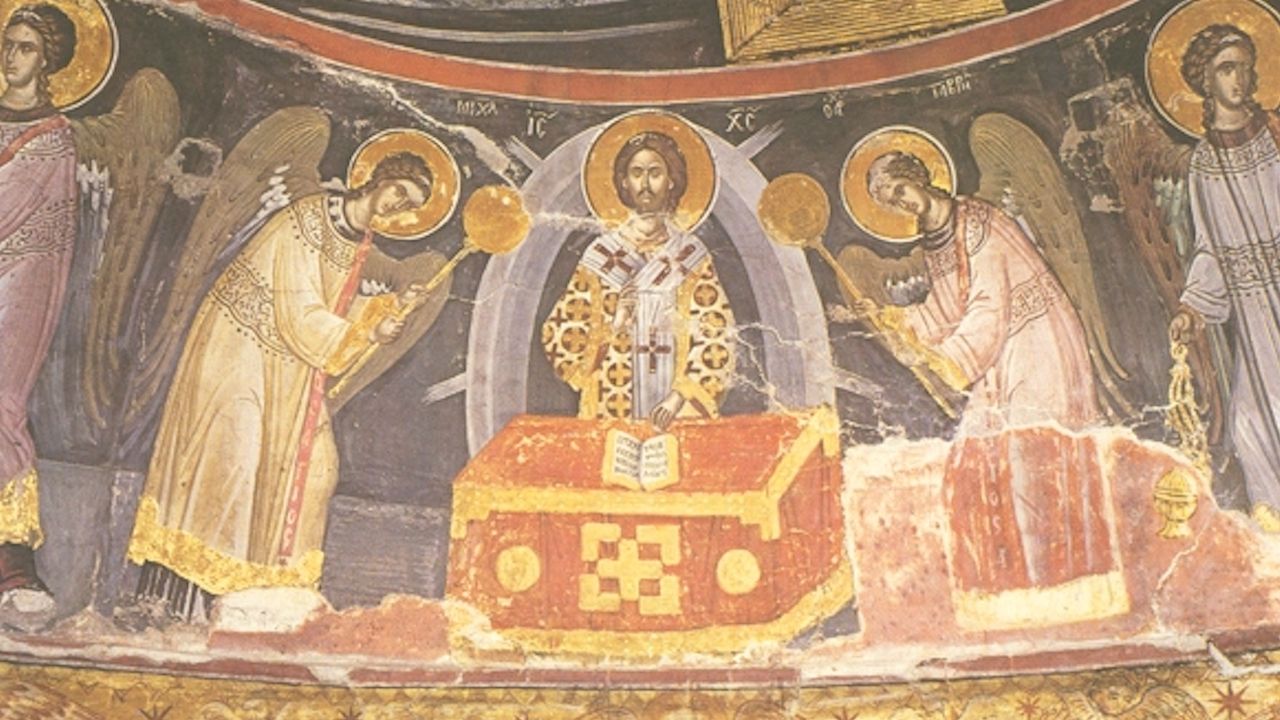LET'S START
with the name. The name “seven deadly sins” actually has a much shorter history than “capital vices” or “capital sins,” both of which bear a more ancient and longstanding pedigree. And in a fun twist, the name seven deadly sins is typically used by Protestants, who by and large reject the distinction between venial and mortal sins, to which the word “deadly” in the name refers.
The list of seven capital vices (as I shall elect to call them) has, moreover, undergone several permutations throughout the centuries. They originate from the fourth-century desert father Evagrius of Pontus. An aristocratic, philosophically minded theologian living among largely (though by no means exclusively) illiterate peasant monks in the desert, Evagrius gave theoretical and systematic articulation to ascetic life in the Egyptian wilderness, categorizing the various forms of temptation and distilling what he called “the eight thoughts,” the often-unrecognized precurser to and fountainhead of one of Christianity’s most enduring moral legacies.
Evagrius’s list included gluttony, lust, avarice, wrath, sadness, acedia, vainglory, and pride. This list passed into the West via John Cassian, a Latin-speaking—and, crucially, Latin-writing—Christian who spent time in the desert with the first monks. In two works, the Institutes
and the Conferences, he summarized and elaborated on the desert tradition. These books were deeply influential in the Latin West, particularly because in his Rule
Benedict identified them by name as essential reading for all monks. Cassian called Evagrius’s eight thoughts the capital vices.
In the sixth century Pope Gregory the Great, writing for a non-monastic audience, did a little pruning and rearranging of the list, dropping pride (which he viewed as the taproot of all sin), adding envy, and incorporating acedia into sadness. His list has remained basically standard in the West ever since. In the twelfth century, however, Hugh of St. Victor made one seemingly small change: he re-substituted acedia for sadness—a happy occurrence, for to have subsumed acedia, the “complex thought,” as Evagrius called it, completely into sadness would have tragically vitiated our understanding of one of the most mercurial and vexing of the classic vices. He also called the list, for the first time, the seven capital sins. This is the fixed and definite form the list and its title took in the West, for it is this list and this title that was sitting in front of Thomas Aquinas (who thought it was Gregory’s) as he brought to bear upon it the force of his genius.
The capital vices are identified as such not because they are the most frequent or worst possible sins but because they are the source of all other sins. There is also a structure to them (I’m using Aquinas’s list): gluttony, lust, and avarice are sins of a carnal, animal, or material nature; while envy, vainglory, and wrath are of an immaterial, rational, or spiritual nature. Acedia lies at the juncture of our animal and rational natures, as Evagrius calls them, and thus acedia incorporates aspects of both forms of sin (which is why Evagrius called it the complex thought).
In the modern West when mention is made of the seven deadly sins it is largely to misunderstand them, thus inadvertently but inevitably promoting further moral confusion. The Christian condemnation of lust, for example, is assumed to entail a rejection of all sex, and the embrace of sexual desire in all its forms is taken to be a liberation of the body rather than its willing enslavement to a sinful passion. Envy and avarice foster economic growth, and we thereby celebrate greed. Sloth becomes leisure. Gluttons are gourmands. The purportedly high stakes of social (media) discourse justify vainglory and wrath.
If we do
recognize vice we psychologize it, both immanentizing sin and trivializing it in one deft motion. Thus gluttony is reduced to obesity and treated as a disease. Wrath is quieted by anger management; pride, amended by a proper sense of self-esteem.
If I seem a little dyspeptic it might be because I’m indulging in schadenfreude—a subspecies of envy—at observing the moral chaos of our culture. So let me turn the coin over and look at the other side: virtue.
*The rest of this essay will be printed in The Moot 2.1, available to all Eighth Day Patrons and Pillars, and released at the 10th annual Eighth Day Symposium on January 23-25. If you are not yet a member, we are offering 50% off Patron and Pillar memberships through the end of January. Sign up before the Symposium and attend free! 







